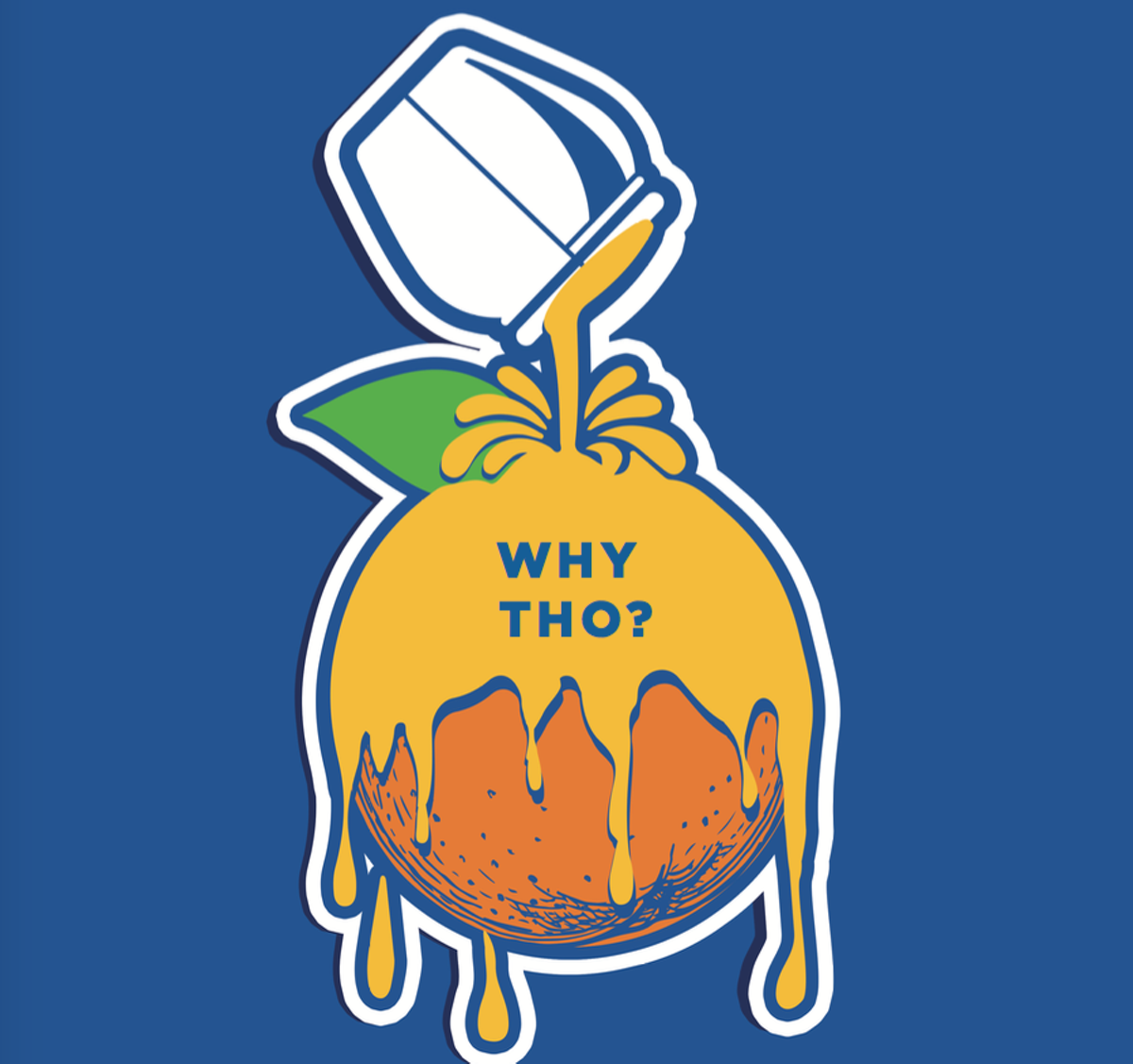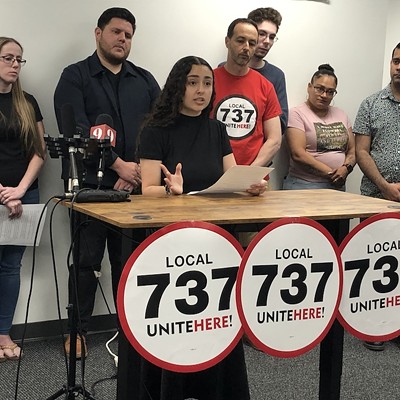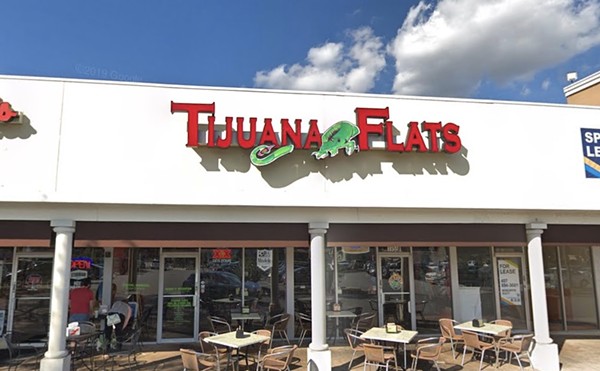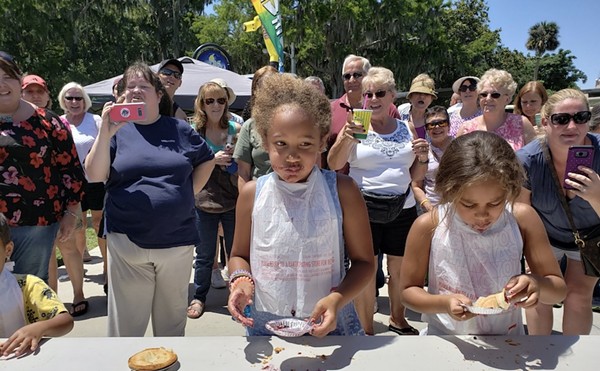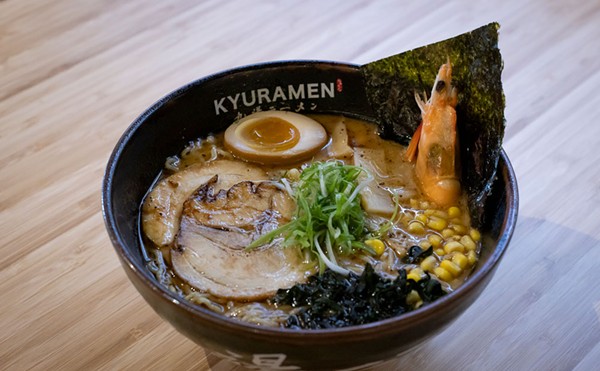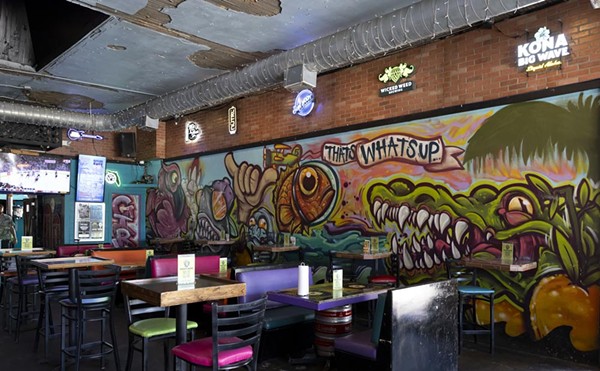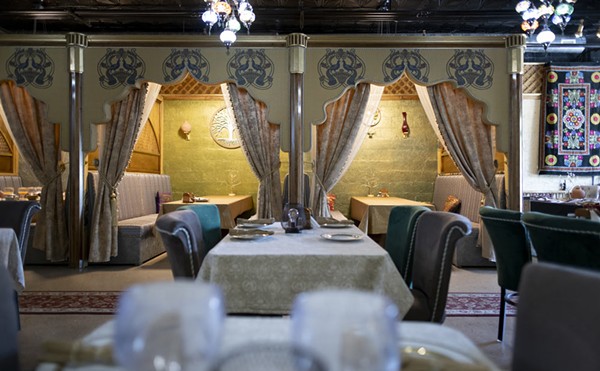Under Orlando's giant observation wheel, Orange County Mayor Teresa Jacobs gathered the region's tourism leaders last April to ask a question with no answer.
"Does Orlando have a signature dish?" Jacobs wondered out loud during her annual State of the County address inside the entertainment complex below the Coca-Cola Orlando Eye. "What are we known for?"
Philadelphia has cheesesteaks. London has fish and chips. Mississippi has a gooey chocolate-based concoction it calls a mud pie. But Orlando? Despite being one of the world's top destinations and home to unrivaled culinary talent, the City Beautiful isn't known for a particular delicacy – our gastronomic delights in the eyes of visitors include gargantuan turkey legs, Dole Whip and butterbeer. So Jacobs proposed a meeting of the minds – the best local chefs in the city's burgeoning restaurant industry would gather with our quasi-public tourism agency, Visit Orlando, to create a signature dish.
"Would y'all agree with me that we can do better than fried turkey legs?" Jacobs asked the crowd. "Would you agree with me that we must do better than fried turkey legs?"
This isn't the first time someone's tried to give Orlando a food to call its own. Back in 1990, Orlando Sentinel columnist Bob Morris held a contest in which his readers submitted 343 boring and bizarre entries into the paper's Florida magazine contest "Find a Food for Orlando." The winner – chosen from among submissions like orange-marinated liver and onions and "Mouseburgers" – was barbecued gator ribs. They never caught on.
After Jacobs' call to action, local foodies proposed a number of native treats: Beefy King's roast beef sandwich, a Cuban bánh mì alongside red beans and rice, and even gator nuggets. But in August, Orange County officials announced the task force of chefs had nominated honey – of all things – as a signature ingredient (a "no-brainer" decision, according to a Visit Orlando social media post), and the competition would be to create a dessert showcasing local honey.
"A signature dish doesn't happen overnight; ultimately it grows organically over time," Jacobs said in a statement after the announcement. "This initiative is a first step in starting the conversation as to what dish the community thinks represents Orlando. In the process, we continue to expand people's awareness of the rich and unique culinary offerings found throughout our region."
Even as the competition came to an end with the Dec. 7 announcement of a winner from among the 10 finalists who created nectar-inspired takes on pastries, cakes and even gelato, some still wonder how we got to honey in the first place, when our county, major streets, landmarks, parades and symbols all namecheck citrus.
A behind-the-scenes look at the process reveals a thriving local backyard beekeeping scene that includes our mayor, and the struggle to get the rest of the world to recognize Orlando's rising culinary profile.
Florida's alligators had only been off the endangered species list for three years when journalist Bob Morris suggested Orlandoans eat them as our quintessential dish.
After being close to extinction thanks to hunters who wanted their hides, the hulking reptiles were placed under federal protection in 1967. Twenty years of not being hunted helped the American alligator recover its population; it was taken off the endangered list in 1987, and Floridians went right back to hunting them, eventually hatching a farming industry currently worth millions.
"Right around the time of the contest, they were legalizing gator trapping," Morris remembers. "When I was growing up, it was against the law to kill one. It was a big deal around here – gator meat was coming out on the market. Everyone was kind of thinking it was going to catch on in a big way."
It was Palmer Yergey of the since-closed Palmer's Place in Winter Park who convinced Morris' panel to go for his intensely marinated gator ribs with a variety of flavor options that included teriyaki sauce.
"I thought it was badass," Morris says. "It tasted pretty good, too. It never caught on, for God's sake, because, you know, if you want ribs, you want to eat pork ribs, not gator ribs. It's pricey, which is why you'll never see them on menus. You got to want them, too, because you got to kill the goddamn gator first."
In a somewhat similar, albeit less toothy way, Florida's honeybees and their golden product have experienced a comparable renaissance.
In 1987, state agriculture inspectors found the bee-killing varroa mites in a Winter Garden hive, according to Sentinel archives. The mites decimated bee colonies across the state, and by 2006, the number of registered beekeepers dropped to about 670, says David Westervelt, chief apiary inspector at the Florida Department of Agriculture and Consumer Services. Things turned around quickly after a growing public concern over the welfare of the tiny pollinators and a change in state regulations in 2012 that voided local municipal restrictions on beekeeping, making it easier to set up hives in residential backyards.
As of last week, 4,665 beekeepers were registered in Florida. Out of that number, Westervelt says about 4,000 are backyard beekeepers, meaning they own anywhere from one to 40 hives, while the rest are sideliner beekeepers and commercial beekeepers, who can own hundreds of hives.
Westervelt says Central Florida is an ideal location for beekeeping: It's warm and sunny for the majority of the year, and its location in the middle of the state makes it easy for commercial beekeepers to ship their colonies to other states to pollinate crops, such as almonds in California.
Perhaps all this information is what local officials were thinking when they set up this year's first meeting on record to discuss Orlando's signature dish on Feb. 16, months before the project was made public. John Rife, owner of East End Market and a backyard apiary enthusiast, says he was invited along with Visit Orlando officials, Mayor Teresa Jacobs, marketing executives, professional culinarians from Disney and chefs from high-end restaurants in Orlando like Le Coq au Vin and Chez Vincent.
"They wanted me to talk about the backyard beekeeping scene," Rife says. "I think at that point, they have already been close to thinking about honey or the mayor would not have brought her honey to the meeting. I brought honey, too, but I didn't want to try to trump the mayor. She gave out vials of honey in her presentation with the glass embossed with bees – it was a great package."
Jacobs reached out to Visit Orlando officials at the beginning of 2017 with the idea of a signature dish, says Denise Spiegel, spokesperson for the organization. Many items were discussed during several meetings, including the possibility of honey as a key ingredient.
"While honey became a clear frontrunner in the February meeting, there were many other pieces to develop in order to announce both the key ingredient and the process for the competition in August," Spiegel says in an email. "There were many options discussed, including citrus. The group liked how honey provided a strong tie back to Orange County's citrus roots but also showcased the diversity of the agriculture in Orlando and a growing local industry."
Visit Orlando, which has been under fire from state officials for a lack of transparency in how it spent the $51 million it received last year from county hotel taxes, did not respond to questions about how much taxpayer money it has spent on this initiative. Previously, Visit Orlando has argued against releasing contract details because it would violate confidentiality agreements. Orange County spokesperson Doreen Overstreet says the county "has not spent any funds on this effort, nor are there any plans to spend money on this initiative in the future."
Jacobs and her husband, Bruce Jacobs, have owned backyard hives for at least the past three years and have recently started packaging it under the label "The Mayor's Honey." On the Facebook page "Teresa Jacobs for Orange County Mayor," Jacobs says they don't get enough honey from three hives to sell and mostly give it away as gifts. Two signature-dish finalists also said Jacobs gifted them with samples of her honey at a second event.
"My husband Bruce is my honey, and the honey in this bottle comes from our two backyard hives," Jacobs writes in an aside on her honey's label. "We started beekeeping a few years ago, and it's been an amazing experience learning about bees and how vital they are to our environment. Enjoy this raw unfiltered honey – from my honey to yours."
Overstreet says that any inferences that Jacobs would financially gain from the initiative are "categorically false. ... It is quite simply a hobby that she and her husband enjoy."
Ryan Schelling, the executive sous chef at the Four Seasons resort in Orlando, says everyone's first thought at the meeting was an obvious choice – citrus.
Florida has many iconic symbols associated with the state (both Florida Man and the mythical skunk ape come to mind), but none is more ubiquitous than the orange. There's an orange on our license plates, our state beverage is orange juice and our state flower is the orange blossom. Enduring through years of devastating freezes and hurricanes over the past three centuries, Florida's citrus production of oranges, grapefruits, tangerines and tangelos reached its peak in 1998, selling 244 million boxes of oranges. In recent decades, citrus greening disease has plagued crops across the state, decimating a $10 billion industry, which produced less than 69 million boxes of oranges during the 2016–2017 season.
Once a hub for the fruit, citrus production in Central Florida has also declined as rural areas have been developed. While Polk County remains among the state's top areas for oranges, producing about 12.5 million boxes, Orange County's crop is one of the smallest – 351,000 boxes in the 2015-2016 season, according to statistics from the Florida Department of Agriculture and Consumer Services. Still, citrus symbols maintain a strong presence in Orange County. We were christened as a county when the fruit was still our main product, Orlando's two main strips are named after oranges, every year we have a citrus parade and, until last year, Camping World Stadium was still called the Citrus Bowl.
At some point, though, Schelling and Rife say the conversation on Orlando's signature dish drifted away from citrus and other possibilities like Zellwood sweet corn and local honey.
"Based on the citrus greening, we kind of moved away from it," Rife says. "It's also such a distinct taste that it's maybe not broad enough that anyone could play in the sandbox. ... The reason we chose to showcase a dessert is we wanted to play on the fact that it's such a family-oriented destination. We wanted a sense of whimsy, fun and indulgence."
When Visit Orlando and Orange County officials finally announced the decision to choose local honey as Orlando's signature ingredient, they touted Florida's variety of the product – including gallberry, saw palmetto, tupelo, blueberry, Brazilian pepper and the popular orange blossom honey.

